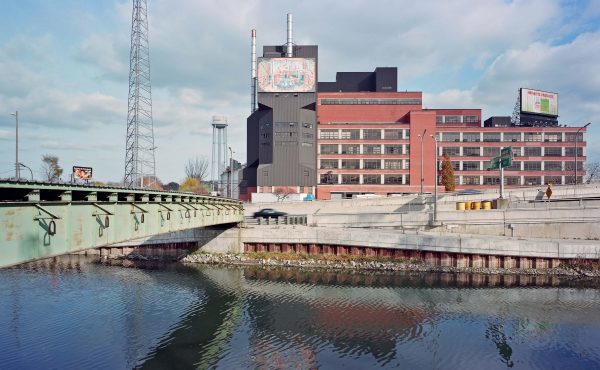
Every Tuesday, Todd Irvine of Local Enhancement and Appreciation of Forests (LEAF) will post a stop from the Toronto Tree Tours, a collaborative project of LEAF and the Toronto Public Space Committee. The Toronto Tree Tours offers walking tours in neighbourhoods across the city as well as virtual tours on its web site. The aim is to introduce Torontonians to the individual trees in their neighbourhood while telling stories of our city’s ecological and cultural history.
—————————————————————————
St. Lawrence neighbourhood tour: Stop 2
This hidden getaway features a beautiful London plane tree (Platanus x acerifolia) in good health with an attractive form. It is recognizable because of its colourful bark that peels off in crisp swathes. These trees are commonly planted along streets in Europe and were first planted in Canada out of colonial nostalgia. Luckily for the tree, it was planted with lots of room for its roots to grow and hence is thriving.
Nearby, setting a bucolic mood, are the Boston ivy (Parthenocissus tricuspidata) vines reaching up the walls. Vines are like trees in that they put on wood every year and grow branches. These vines are quite old and likely planted at the same time as the London plane tree. Although often maligned, vines are not as damaging to buildings as sometimes thought. They in fact cool Berkeley Castle, protecting it from exposure to sun and providing habitat for birds.
Berkeley Castle got its name from the craftspeople, artists, and musicians who lived, worked, and flourished in the squalid surroundings during the 1970s. Purchased by developers Diamond and Partners in the 1970s, the building has been significantly restored.
Photograph by Luke Tyszkiewicz – www.stillsinflux.com



